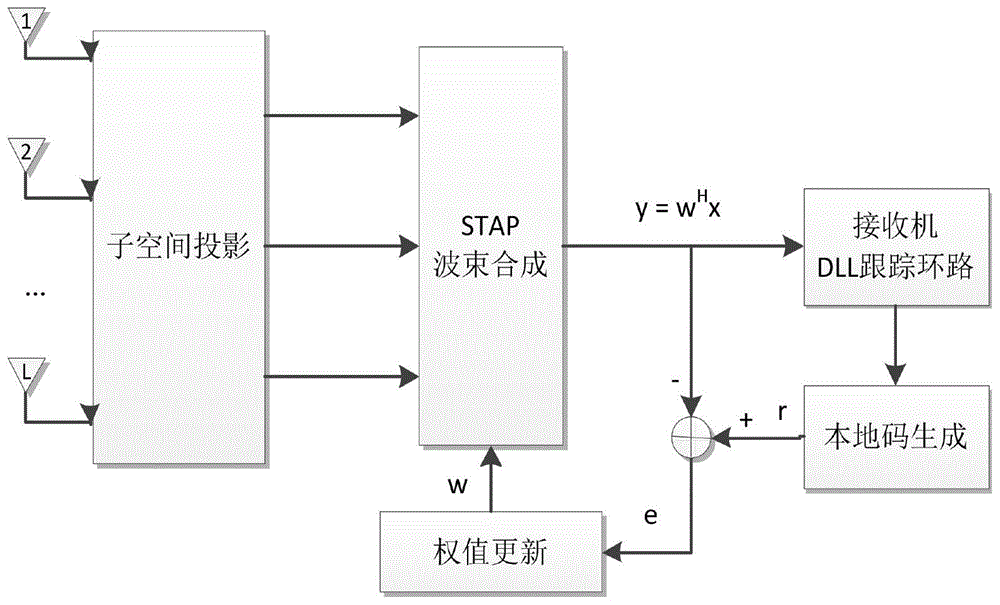Navigation receiver STAP algorithm through which subspace projection is performed before beam forming
A navigation receiver and beamforming technology, applied in radio wave measurement system, satellite radio beacon positioning system, measurement device, etc., can solve the problem of low navigation signal power, and achieve the effect of improving stability and tracking accuracy
- Summary
- Abstract
- Description
- Claims
- Application Information
AI Technical Summary
Problems solved by technology
Method used
Image
Examples
Embodiment Construction
[0045] The present invention provides a specific embodiment of a navigation receiver STAP algorithm that first subspaces projection and then beamsynthesizes. First, SVD decomposition is performed on the received data covariance matrix, and the eigenvectors corresponding to the large eigenvalues form an interference subspace, and the small eigenvalues correspond to The eigenvectors form the noise subspace, project the received data vector to the noise subspace to achieve interference suppression, and then use the local pseudocode of the navigation signal as a reference signal to perform beamforming on the array weights, so that the main beam of the array antenna points to the navigation signal. wave direction. Such as figure 1 shown, including the following steps:
[0046] Step S1, using the subspace projection algorithm to achieve interference suppression, the calculation steps are
[0047] The array receives the data vector as
[0048] x(k)=[x 0 (k) T ,x 1 (k-T 0 )...
PUM
 Login to View More
Login to View More Abstract
Description
Claims
Application Information
 Login to View More
Login to View More - R&D
- Intellectual Property
- Life Sciences
- Materials
- Tech Scout
- Unparalleled Data Quality
- Higher Quality Content
- 60% Fewer Hallucinations
Browse by: Latest US Patents, China's latest patents, Technical Efficacy Thesaurus, Application Domain, Technology Topic, Popular Technical Reports.
© 2025 PatSnap. All rights reserved.Legal|Privacy policy|Modern Slavery Act Transparency Statement|Sitemap|About US| Contact US: help@patsnap.com



